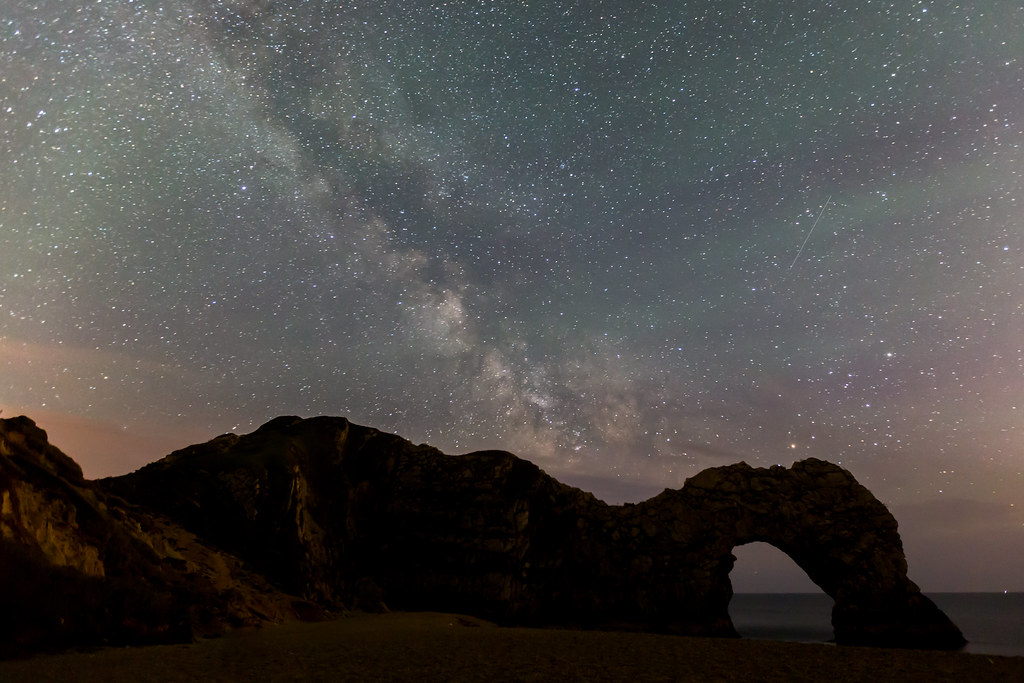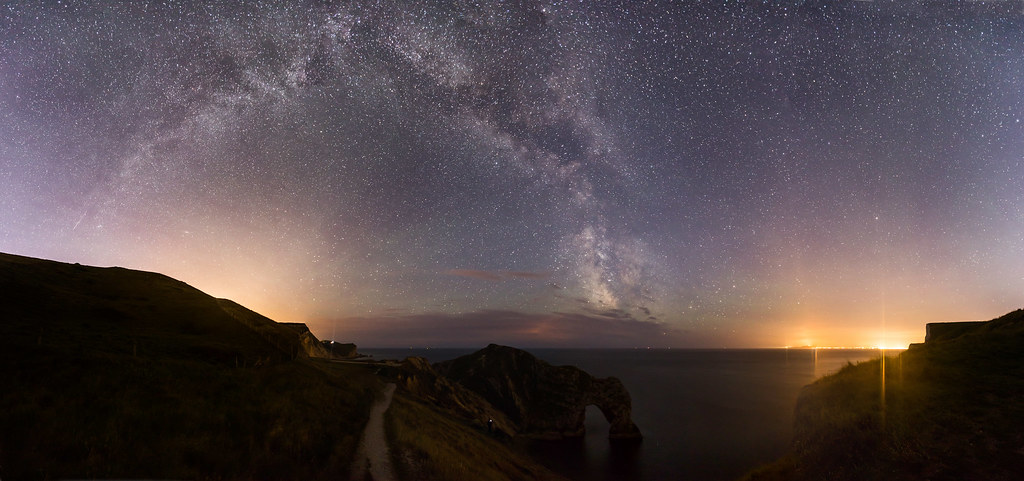- Messages
- 395
- Name
- Kevin
- Edit My Images
- Yes
I took a trip out to Durdle Door at Lulworth Cove in Dorset last night to shoot the Milky Way.
I got there around 7pm to scope the place out a bit in the light and parked at Lulworth Cove. This was a mistake!! Although the walk along the cliffs looks nice it's incredibly steep to the top and down the other side and the path is very rocky and uneven. When I got to Durdle Door I was cream crackered! It was quite hot but windy and I was carrying 2 rucksacks of camera gear, warm clothing, food/water and a tripod!! I guess the caravan site would have been better but I'd read so may iffy stories about the security there I thought I'd go in the other one. It's a long steep walk but there's no problem parking overnight, it was full of cars when I got back.
Anyway, I had an hour or so to check the location out and wait for sunset. This wasn't perfect because the sun was setting well north of due west so it was quite a long way round the cove and behind the cliffs but it was nice enough. Then I got down to the beach via the very steep steps and sat in some shelter waiting for 1am.Bumped in to 2 other guys doing the same and one other was up on the cliff top as I saw him light painting the door before I got started. Not sure our paths crossed over the rest of the night so if it was anyone on here, hello!
The sky was thinly cloudy at around 10 but over the next couple of hours it blew over to reveal a clear sky, save for some cloud on the horizon which marred the pictures a bit.
I finally called it a day (or night!) at 3am and took the 2hr trip back home again for some well earned sleep!
 Milky Way at Durdle Door by Kevin Clark, on Flickr
Milky Way at Durdle Door by Kevin Clark, on Flickr
Pano of 14 pics stitched together
 Milky Way at Durdle Door by Kevin Clark, on Flickr
Milky Way at Durdle Door by Kevin Clark, on Flickr
 Milky Way at Durdle Door by Kevin Clark, on Flickr
Milky Way at Durdle Door by Kevin Clark, on Flickr
I got there around 7pm to scope the place out a bit in the light and parked at Lulworth Cove. This was a mistake!! Although the walk along the cliffs looks nice it's incredibly steep to the top and down the other side and the path is very rocky and uneven. When I got to Durdle Door I was cream crackered! It was quite hot but windy and I was carrying 2 rucksacks of camera gear, warm clothing, food/water and a tripod!! I guess the caravan site would have been better but I'd read so may iffy stories about the security there I thought I'd go in the other one. It's a long steep walk but there's no problem parking overnight, it was full of cars when I got back.
Anyway, I had an hour or so to check the location out and wait for sunset. This wasn't perfect because the sun was setting well north of due west so it was quite a long way round the cove and behind the cliffs but it was nice enough. Then I got down to the beach via the very steep steps and sat in some shelter waiting for 1am.Bumped in to 2 other guys doing the same and one other was up on the cliff top as I saw him light painting the door before I got started. Not sure our paths crossed over the rest of the night so if it was anyone on here, hello!
The sky was thinly cloudy at around 10 but over the next couple of hours it blew over to reveal a clear sky, save for some cloud on the horizon which marred the pictures a bit.
I finally called it a day (or night!) at 3am and took the 2hr trip back home again for some well earned sleep!
 Milky Way at Durdle Door by Kevin Clark, on Flickr
Milky Way at Durdle Door by Kevin Clark, on FlickrPano of 14 pics stitched together
 Milky Way at Durdle Door by Kevin Clark, on Flickr
Milky Way at Durdle Door by Kevin Clark, on Flickr Milky Way at Durdle Door by Kevin Clark, on Flickr
Milky Way at Durdle Door by Kevin Clark, on Flickr